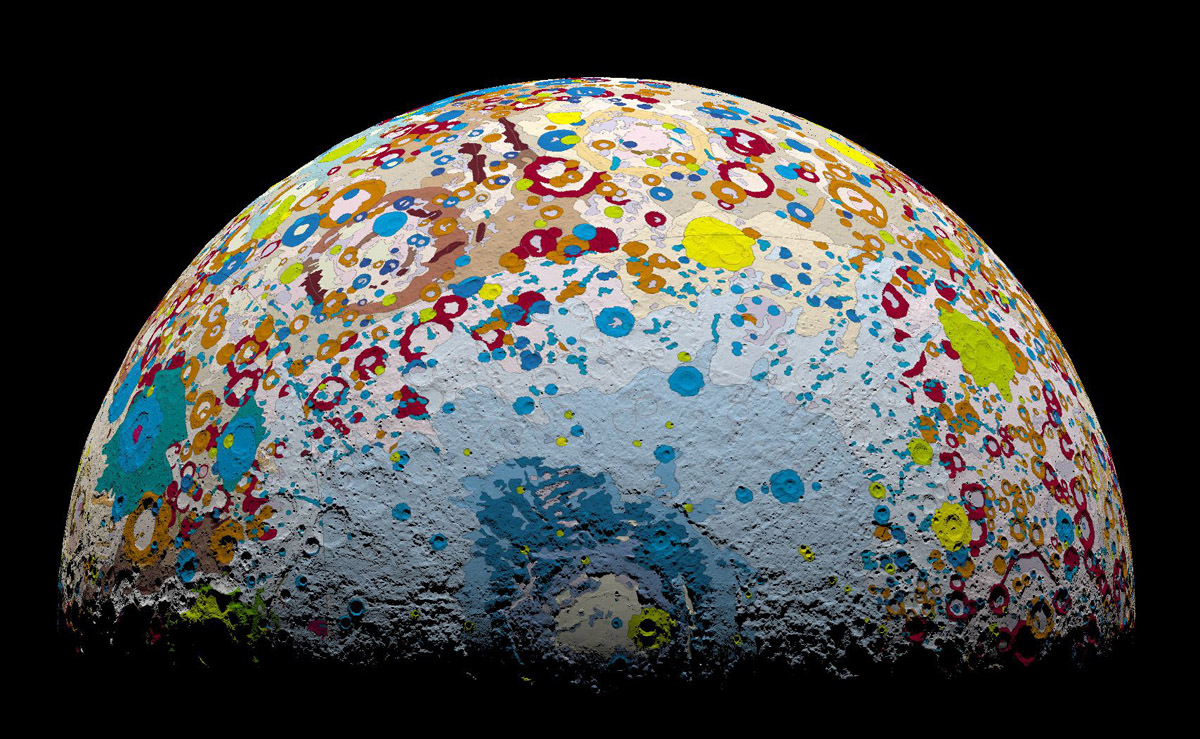July 30, 2019
The Unfamiliar Side of Orientale
Originally published April 18, 2010

image by Maurice Collins, Palmerston North, New Zealand
Visually combining data sets makes it easier to synthesize information and increase comprehension. Maurice used LTVT to overlay the 35 year old geologic map of the Moon from the US Geological Survey on the new high resolution digital topographic map from LRO's LOLA altimeter. The version of the geologic map used came from the Virtual Moon Atlas. The colors represent surface materials of different ages; the shades of blue are all Orientale ejecta with different characteristics or facies. Note the very small number of younger craters (green and yellow) superposed on the ejecta. See how the lightest, outer zone of blue ejecta flows around pre-exting obstacles like crater rims, but the next deeper blue unit closer to the basin's rim often totally buries craters. The ejecta is a few kilometers deep at the basin rim, and thins radially away from it. Large basin secondary chains also stream away from the basin, especially to the upper right and to the left. If these features don't seem familiar to you that is because this is the side of Orientale beyond the limb, everything here is on the farside.
Chuck Wood
Technical Details
Colors on map represent ages of surfaces. From oldest to youngest: gray (pre-Nectaris basins), brown (Nectaris age basins), dark blue (Imbrium), light blue (Orientale) are ejecta deposits from named basins; pink (early Imbrian), orange (younger), red (youngest) basaltic maria; blue (oldest), green (young), yellow (youngest - Copernican age) crater ejecta. (from Feb 3, 2004 LPOD).
Related Links
Maurice's website
Yesterday's LPOD: Interesting Big Stuff
Tomorrow's LPOD: Three of a Kind
COMMENTS?
Register, Log in, and join in the comments.



